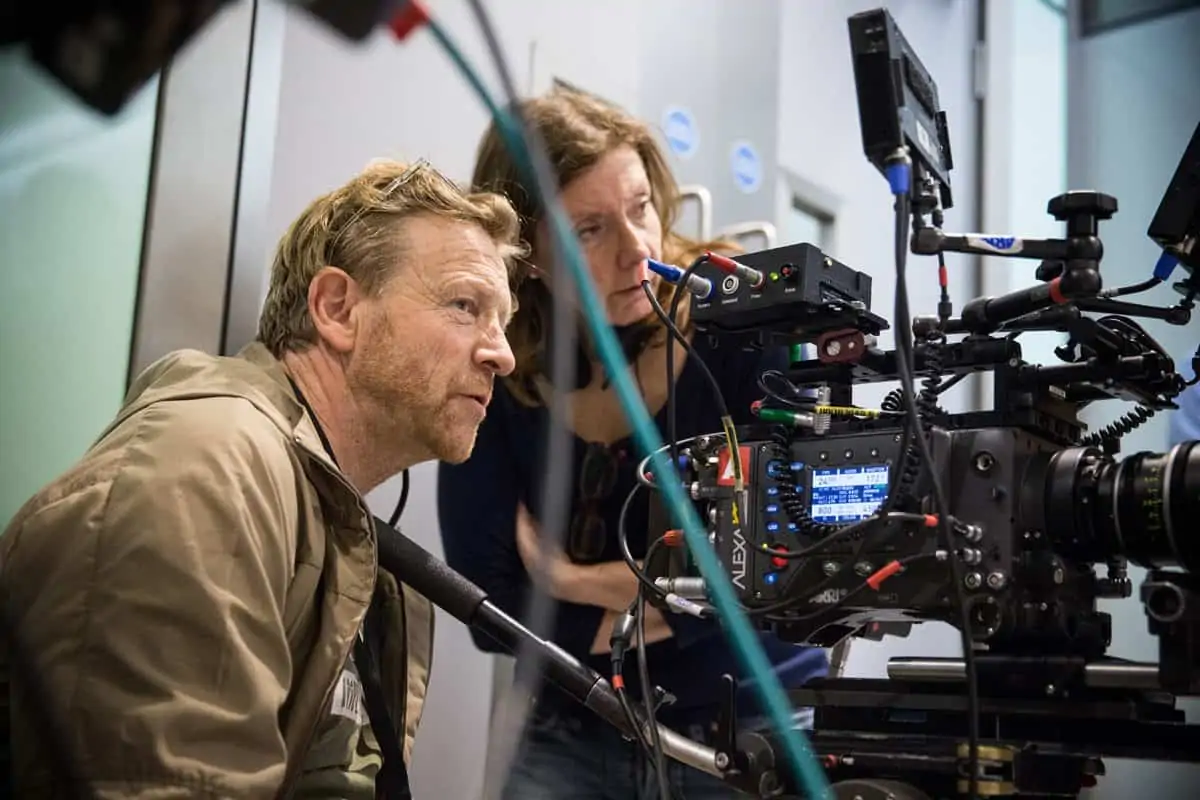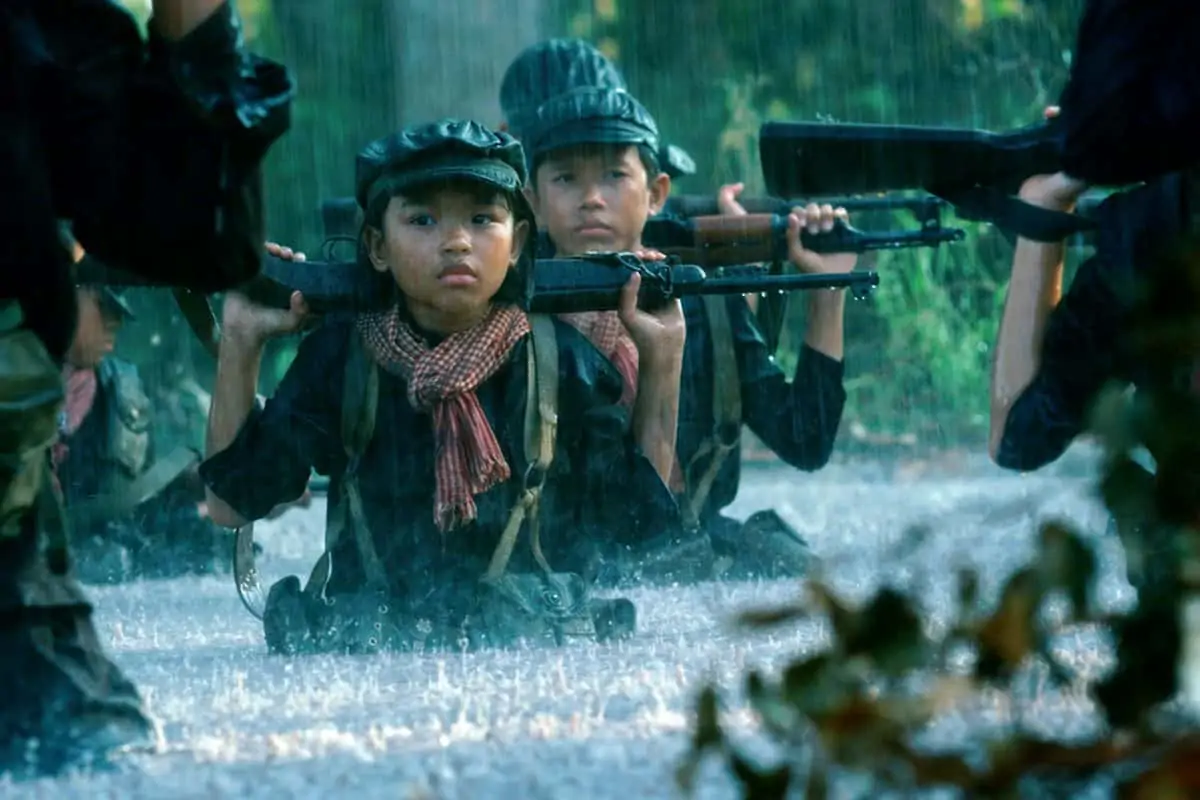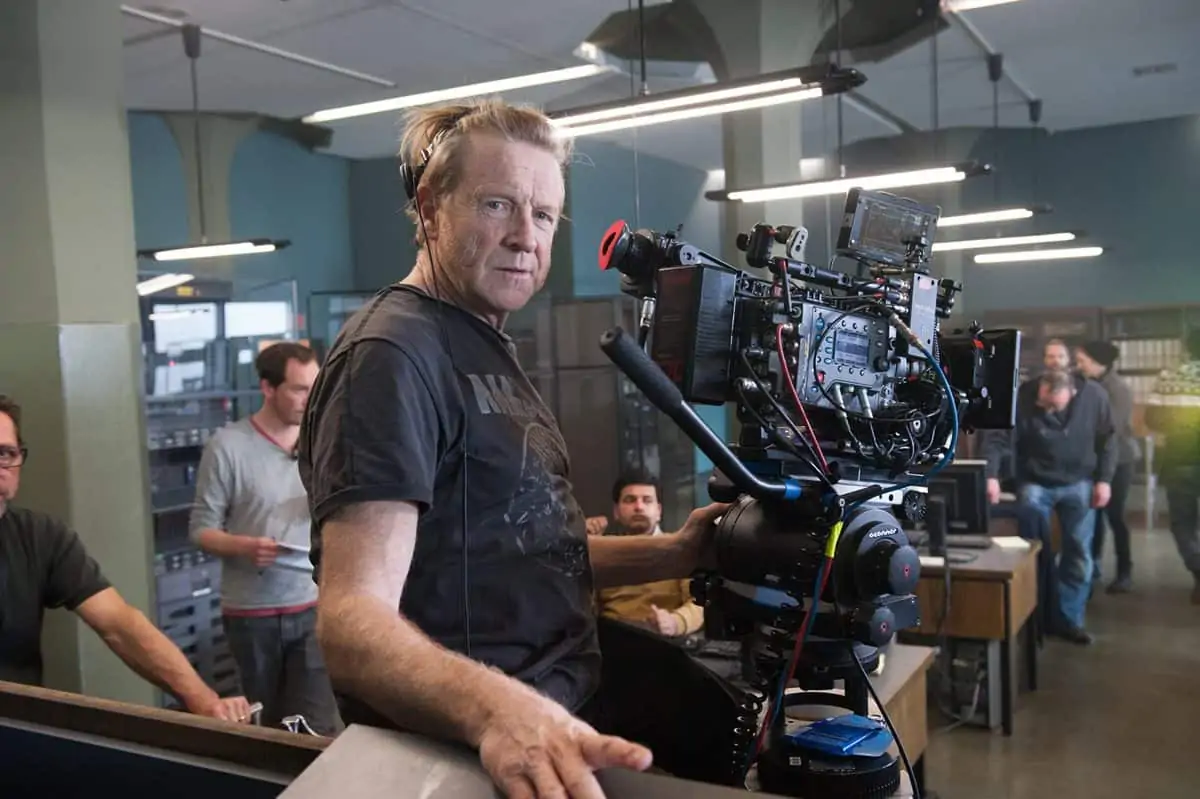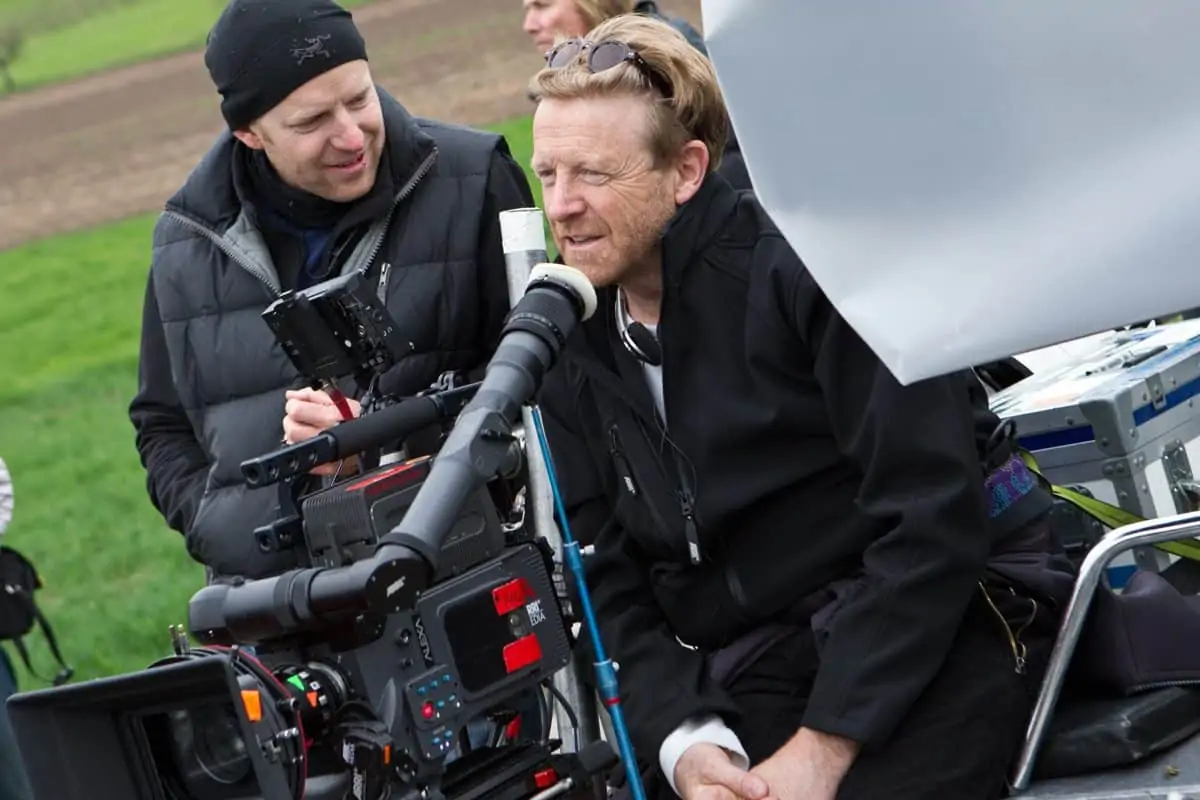Gone Fishin'
Anthony Dod Mantle DFF BSC ASC / In The Heart Of The Sea
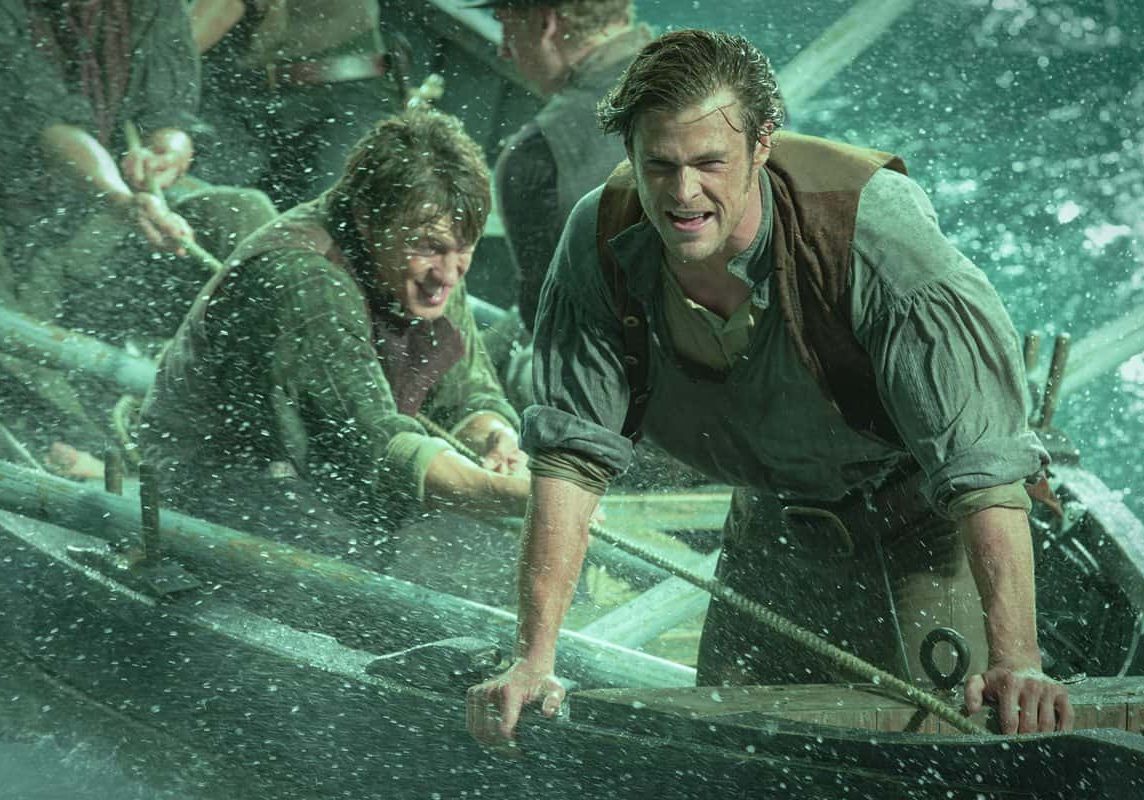
Gone Fishin'
Anthony Dod Mantle DFF BSC ASC / In The Heart Of The Sea
BY: Ron Prince
In 1820, the crewmen of New England whaling ship Essex faced a harrowing battle for survival when a whale of titanic size and strength attacked with force, sinking their vessel and leaving them adrift on the ocean thousands of miles from dry land.
Pushed to their limits and facing ferocious storms, starvation, panic and despair, the wretched survivors resorted to the unthinkable act of cannibalism in their bid to stay alive.
Their incredible tale proved the catalyst for author Herman Melville to write the outstanding work of the American Renaissance, Moby Dick; or, The Whale (1851), and was also the inspiration for Ron Howard’s $100m production In The Heart Of The Sea. Based around Nathaniel Philbrick's 2000 non-fiction book of the same name, and written by Charles Leavitt, the motion picture stars Chris Hemsworth, Benjamin Walker, Cillian Murphy and Tom Holland as the crew of the Essex, with Ben Whishaw cast as Melville and Brendan Gleeson playing Thomas Nickerson the last survivor of the haunting story, who was a callow youth at the time of the fateful voyage.
In charge of shooting the movie was cinematographer Anthony Dod Mantle DFF BSC ASC, who teamed-up again with Howard following their successful, collaborative outing on F1 racing drama Rush (2013). Dod Mantle’s work on In The Heart Of The Sea has been widely lauded, with critics variously praising his “gorgeous painterly visuals” and “dramatic Turner-esque palette”.
Along with getting the chance to work with Howard again, Dod Mantle says he was attracted by the opportunity to author images for a new version of Moby Dick for the 21st century, and by the allegorical parallels to Howard’s Apollo 13 (1995).
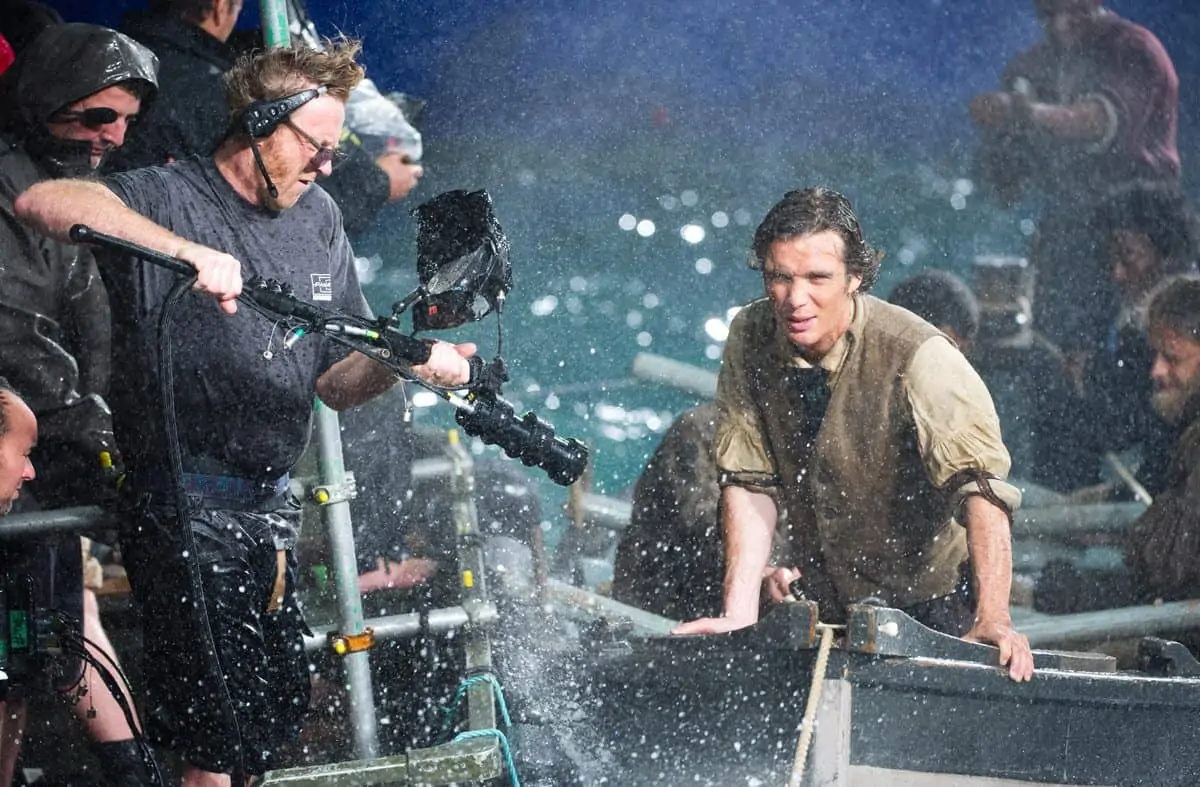
“I feel a brotherly love for Ron,” says Dod Mantle. “Considering his status in Hollywood’s firmament, he’s a lovely man, so grounded, with a charming disposition and a joy to work with. Whilst John Huston’s original Moby Dick (1956) movie has wonderfully theatrical and epic moments, it is somewhat dated now. Ron wanted authenticity, but didn’t want to approach it as a classic. He wanted to approach it as though a modern group was somehow transported back and able to capture what went on.
“Its a story of exploration and survival, and amongst all the action and adventure, it’s also an allegory – about man venturing away from his natural domain, into a habitat belonging to something other than mankind, and what can happen when humans are no longer in control of the situation. For me the aesthetic of the sea and the whale’s habitat were crucially important to the texture and soul of the production.”
Principal photography on In The Heart Of The Sea began in September 2013 in London and on multiple stages at Warner Bros. Studios Leavesden in Hertfordshire, wrapping mid-November. The production then switched to the island of La Gomera, in the Canary Islands, for seven weeks of off-shore boat-to-boat work, and some location shooting in Lanzarote.
At Leavesden some scenes were planned around built sets, such as Nantucket harbour, with others mounted on stages within interior tanks surrounded by giant bluescreens. A model of the Essex was built and mounted on a gimbal to mimic the pitch of the ship in both placid and cataclysmic weather conditions. To get the right effect for the storm scenes up to 500 gallons of icy water would be dumped from cannons, deluging not just the cast but the cinematographer too.
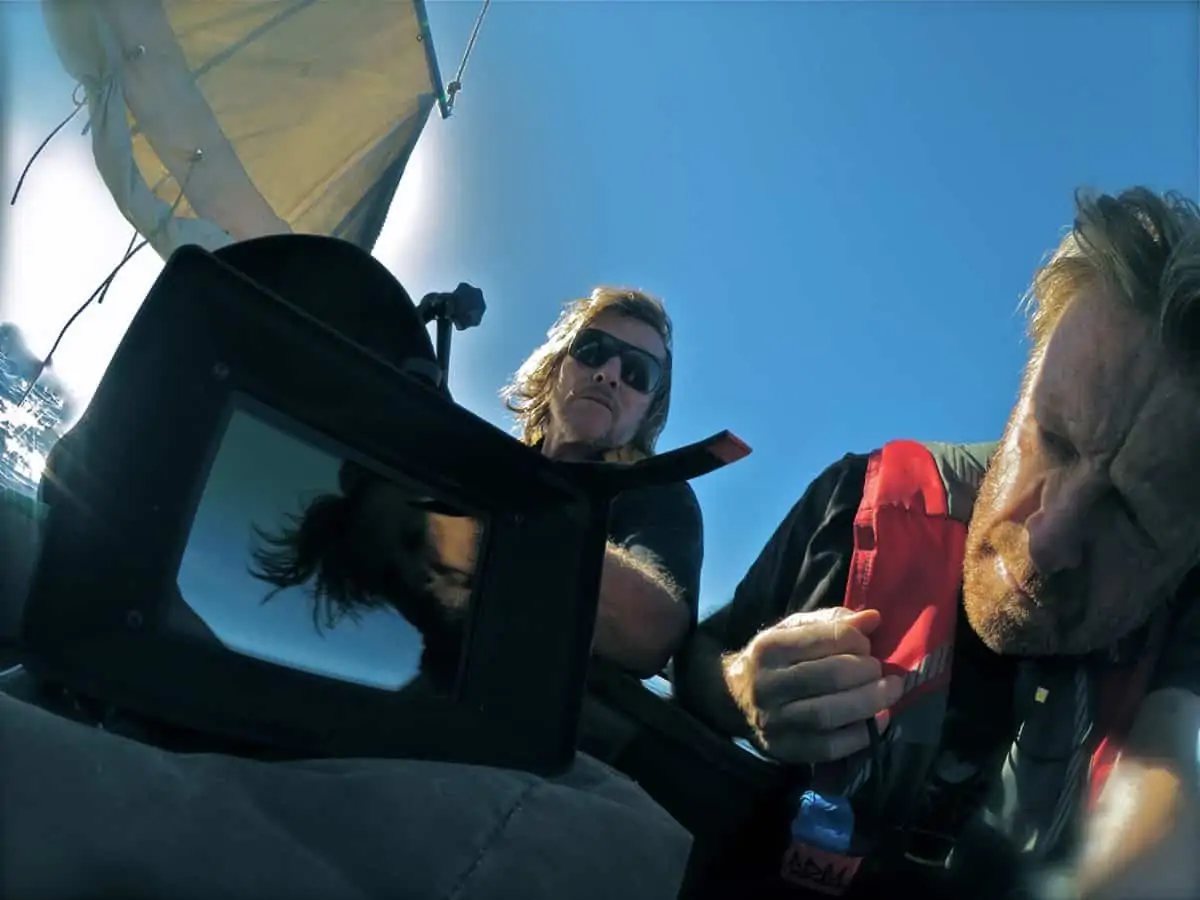
"You must trust your instincts with an idea, hold it and be consistent about what you do as an artist."
- Anthony Dod Mantle DFF BSC ASC
“To tell the story we knew we would need Technocranes on the boats, a massive underwater unit, plus a flying unit to relate the visual dialogue between the Essex, the rowing boats and the whale from above,” he says. “Shooting, controlling and matching scenes shot day and night, in exterior and interior tanks, as well as on the real sea with changing light and weather conditions – across first, second and third units – is a big ask for any cinematographer, and even more so when you’re operating. Which is probably why many ocean-bound movies end-up being done entirely in the studio, and also end-up looking overly crisp and pictorial. But we didn’t want to do it that way.”
Given the complexity of production, and to help mitigate the variables in footage coming form the various marine, flying and underwater units, Dod Mantle participated from very early-on in “methodology” meetings. Here, the director and key heads of department, “would literally move cardboard boats around on charts for hours-on-end. We would consider the tides, the height of the sun, and work out how and when to shoot, thoroughly planning the production in blocks in advance. This was especially pragmatic for the sea-borne shoots as I prefer to light from the side, and never like to shoot with the light on my neck.”
Attempting to hook a visual starting point for the look of In The Heart Of The Sea, Dod Mantle says he and Howard spoke about all manner of movies that inspired a fear of the ocean during an on-going conversation – in cars, taxis, aeroplanes, at mealtimes and even on the golf course on La Gomera – as they travelled, lived and relaxed together during the three month recce and prep period. Ang Lee’s Life Of Pi (2012, DP Claudio Miranda), Peter Weir’s Master And Commander (2003, DP Russell Boyd), old-fashioned pirate movies, and more modern ones, such as Paul Greengrass’ Captain Phillips (2013, DP Barry Ackroyd BSC), were all considered in some fashion, as was JC Chandor’s survival movie All Is Lost (2013, DP Frank G. DeMarco/underwater DP Peter Zuccarini). However, Dod Mantle says none were how he wanted to present the ocean for this movie.
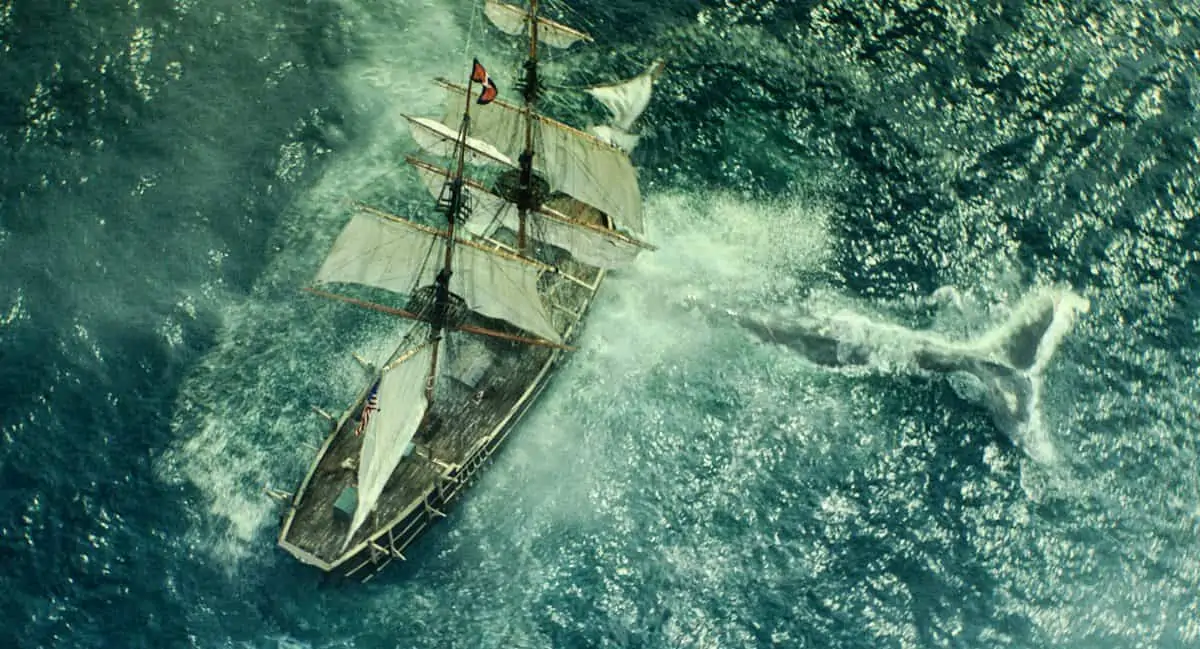
Along with paintings by Delacroix and Turner, he says the most inspirational visuals came in the form of the Discovery series Deadliest Catch and the 2012 fishing documentary Leviathan, shot by anthropologists Lucien Castaing-Taylor and Verena Paravel.
“I found Leviathan in particular to be remarkable and thought-provoking, filmed on a fishing trawler off the New England coast in the same seas that inspired Moby Dick,” he remarks. “It’s a remarkable cinematic experience, a visceral portrait of fishing, with incredible swells where the boats disappear between the waves and the cameras are soaked in brine and blood and guts. It reminded me of how I embedded cameras into the F1 racing cars and Niki Lauda’s helmet in Rush and I decide to run with this.
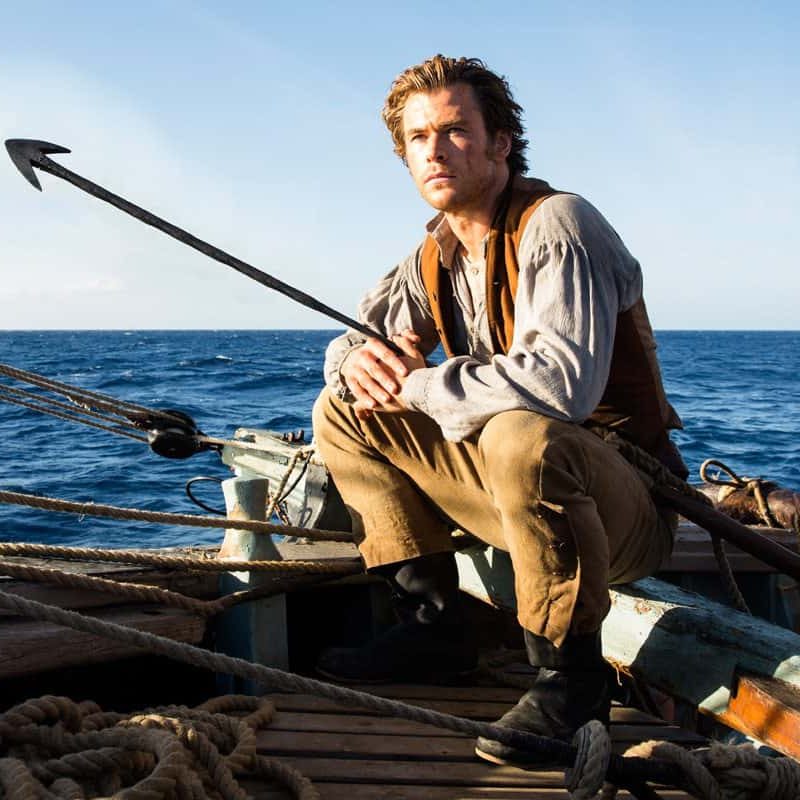
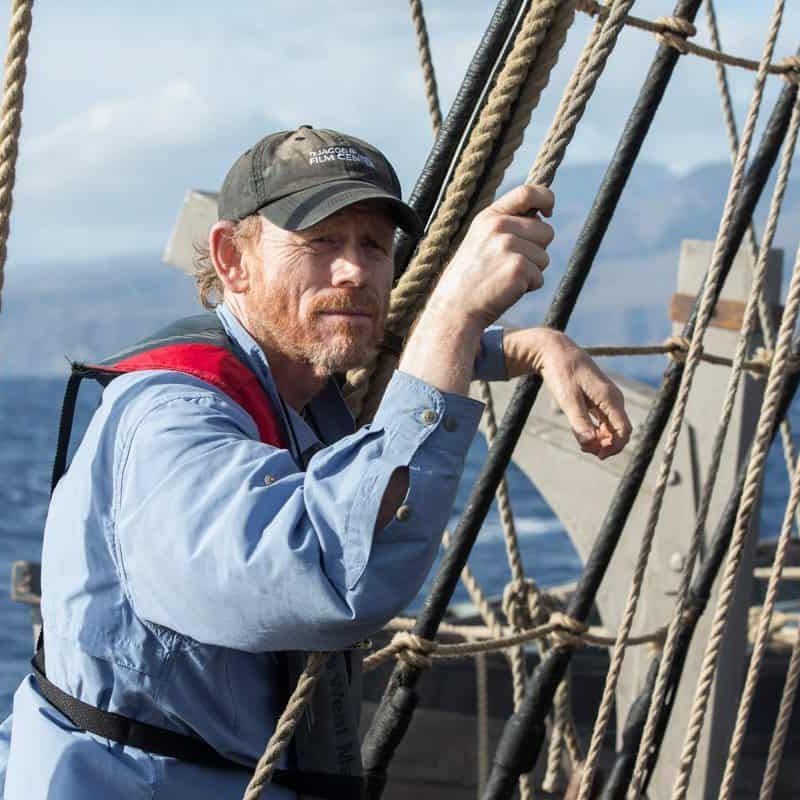
“I actually had the choice of shooting film or digital, which is quite a luxury. And I did think seriously about shooting on film,” he admits. “However I felt digital, shooting RAW, would give me a better chance to capture magical moments in uncontrollable situations. Shooting RAW I know I can contain all the horrendous contrast ratios that are presented to cinematographers in all seasons of the year. When I get home, I can provide a graded daily that will get the editor in the right place. Then I can get pretty heavy in the grade, and finally get it the way I want.”
With the approval of the director, producers and studio executives, Dod Mantle opted for ARRI Alexa XT cameras, with Codex recording media and workflow, capturing images in ARRIRAW. Howard and Dod Mantle settled on a 1.85:1 aspect ratio, as the extra height of the frame would minimise vertical tilt and allow the audience to retain visual contact between the sea the sky in the most ferocious storm sequences. “I also felt it would look slightly more like an historical document than a modern movie,” he adds.
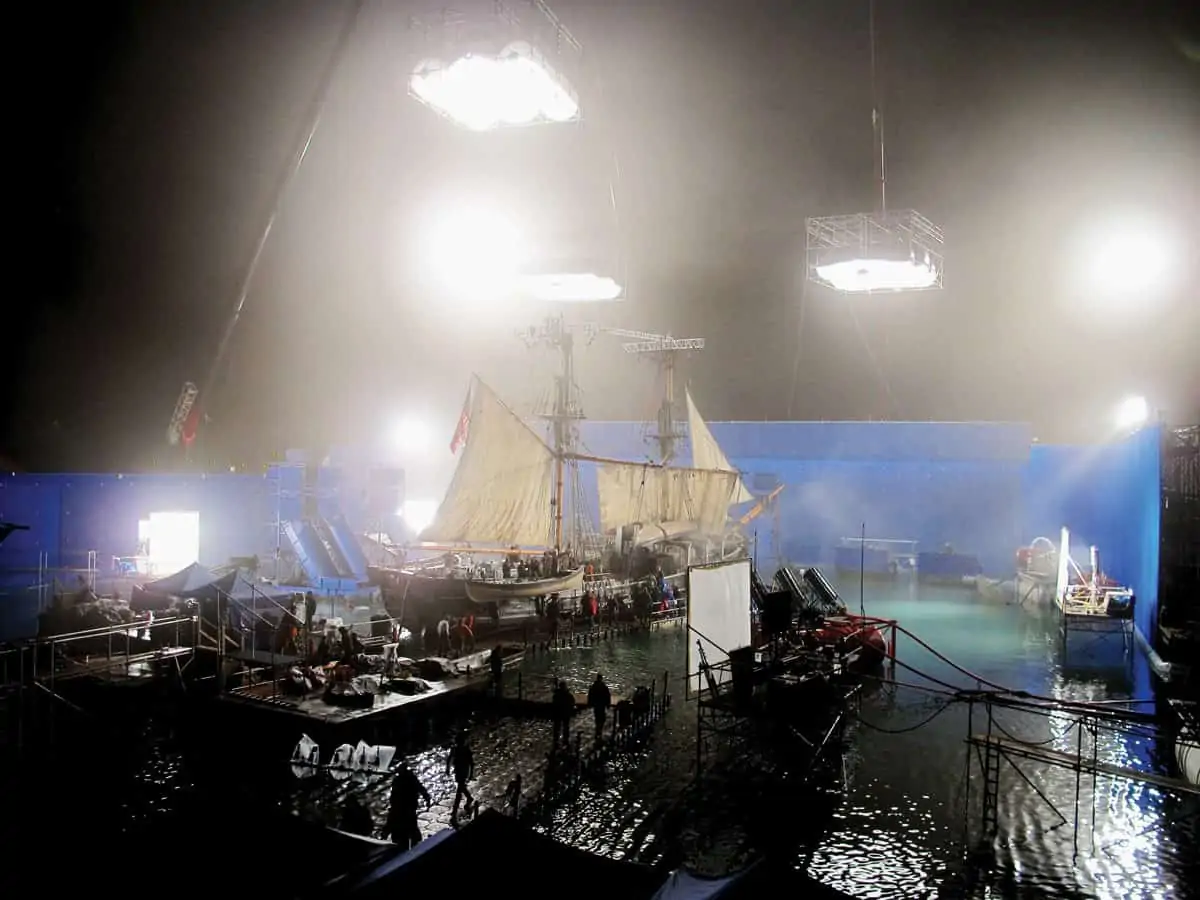
“You must trust you instincts with an idea, hold it and be consistent about what you do as an artist. We must protect the artform as well as making good movies.
For In The Heart Of The Sea I wanted to take the audience into the body, the skeleton of the Essex – to the blast of rapidly uncoiling anchor chains, hands on ropes and the ship’s wheel – to feel in tune with the crew, the boat and the seas. Often on-deck there’s not a lot of room, and shooting with bigger cameras can be more complicated and erratic, so there was a pragmatic and creative element to having embedded cameras.”
From this instinctive starting point, and bearing in mind the complicated nature of the production from the methodology sessions, Dod Mantle had to expand his vision for the movie and select the main production format.
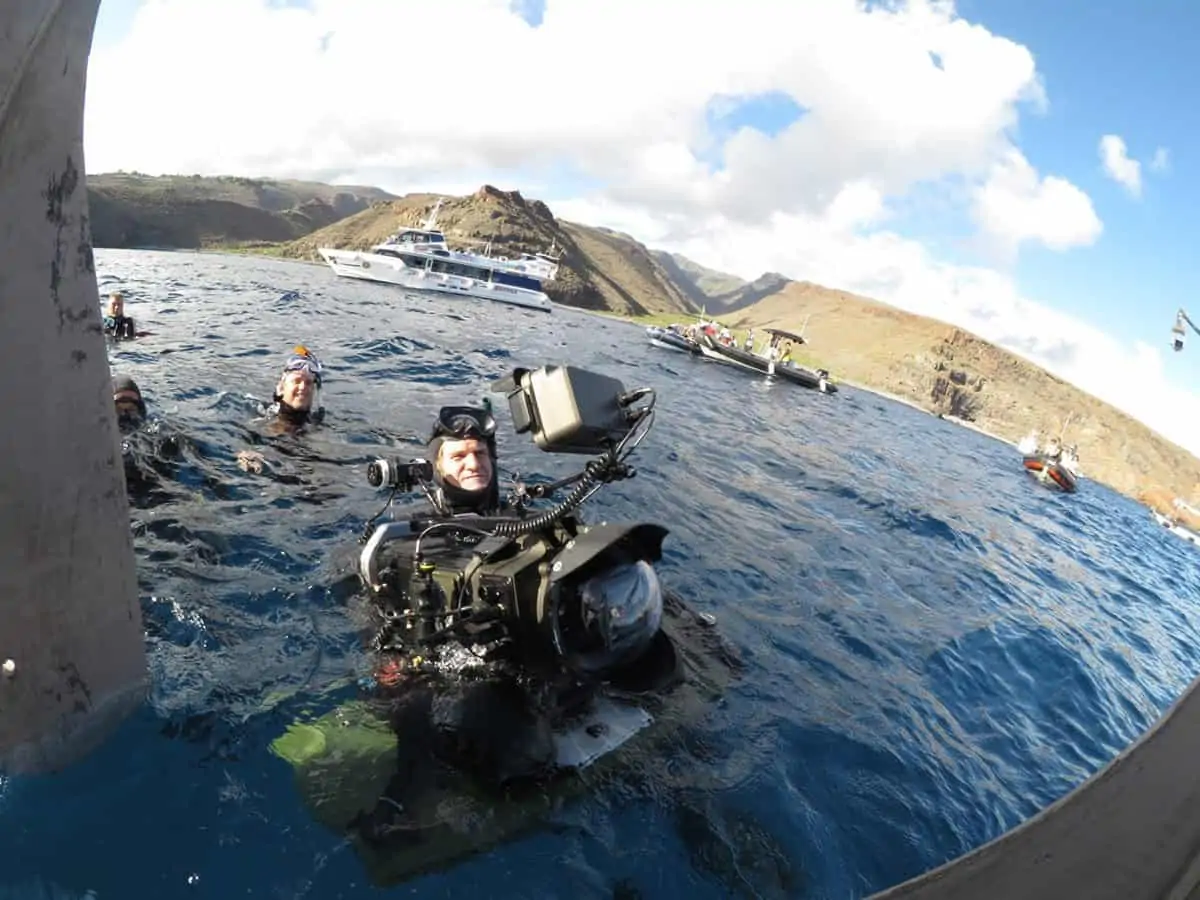
The lenses used included Panavision close-focus primes and Primo zooms, with the zooms often on the crane-mounted cameras. “I love the lenses in the high 20mm range as they have more fall off in the background, and I wanted to see the sea effects across the frame whilst hovering around a face,” he explains. “Along with being practical to use on the different sets and at sea, the zooms also helped me shoot coverage for Ron.”
When a smaller, lighter camera was needed – because of ergonomics, physical space limitations, or the kind of shot envisioned – Dod Mantle sometimes used a Canon C300, smaller video cameras, such as the 2K global shutter IndieCAM, and even a Canon 1DC DSLR.
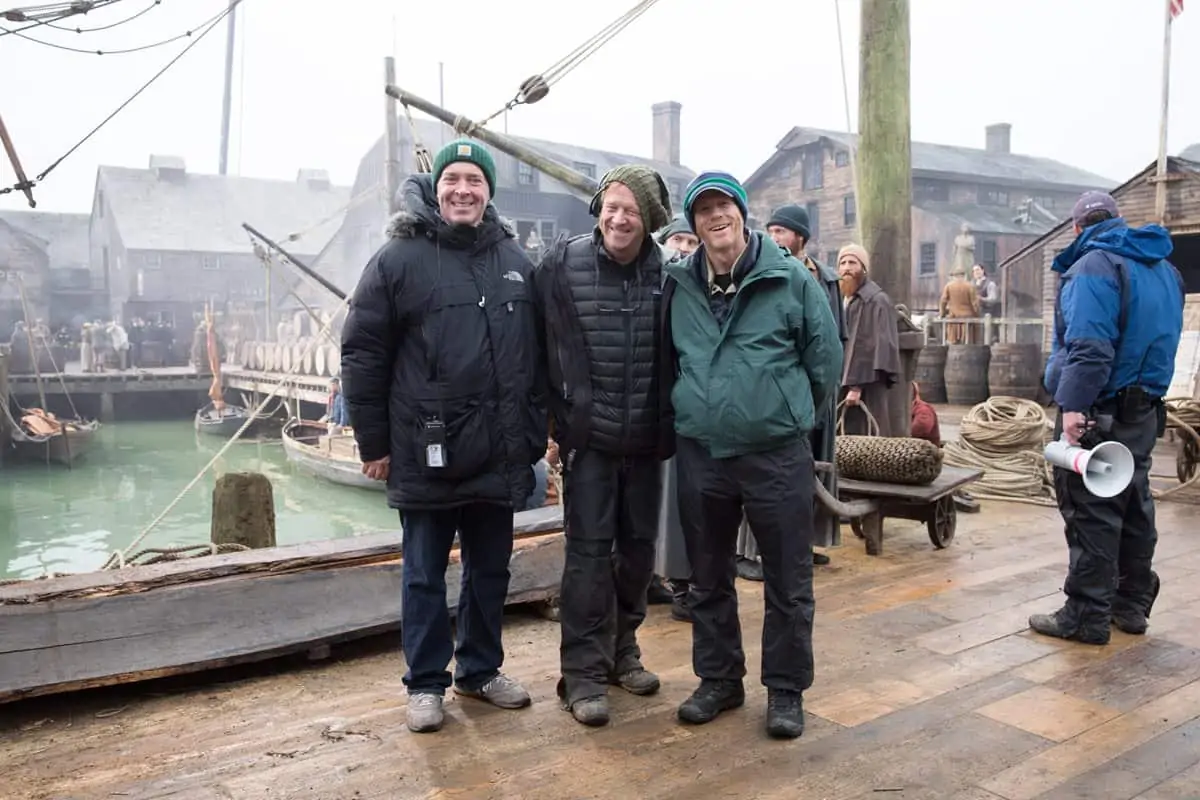
“We wanted the camera to be physical and move around, to capture epic moments as well as moments of calm and peace too,” says Dod Mantle. “Depending on the situation, the cameras were mounted on Technocranes, handheld on the deck, or mounted on dollies. After spending two days operating myself, on the Essex gimbal, with thousands of gallons of water being dumped on me and Chris (Hemsworth), I know how Turner must have felt when his strapped himself to the mast. I never threw up, but had a vertiginous, fluid-filled feeling in my ears and head for a few days afterwards.”
When it came to controlling the light and the aesthetics of the sea scenes, Dod Mantle describes is approach as, “pretty fascistic. I hate the clear, crisp distinction between pale blue sky and deep blue sea you get in many movies – it’s too pictorial, romantic and not psychologically evocative.
“I worked with the art direction and VFX teams on how we could make the skies and sea meet, and even referred them to Delacroix and Turner. Carey Duffy at Tiffen found some ancient graduation filters, that are no longer made, that would pull down the sky by 5 or 8 stops, and are much softer than modern filters. Adding an ND3 or ND6 on top, I could get to 12 stops down, and then redeem a face from the background with some direct illumination, that I knew I could also enhance later in the grade.”
Defining and executing the colour palette for each movie he works on is always a vital consideration for Dod Mantle, and In The Heart Of The Sea was no exception.
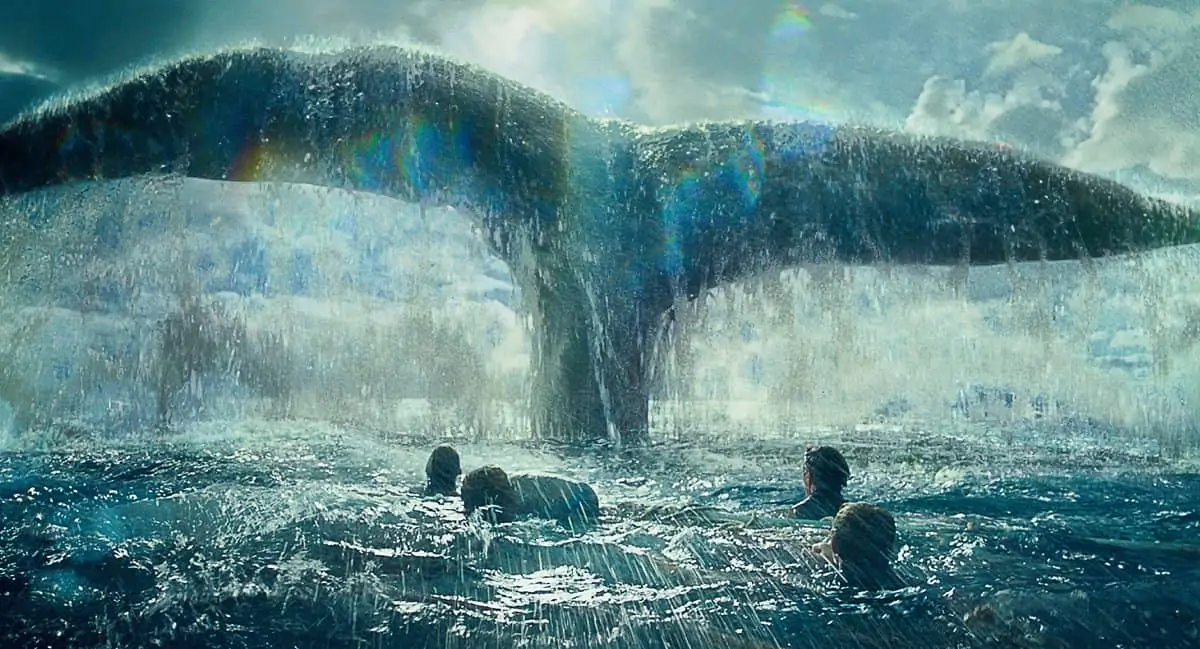
Dod Mantle speaks highly of his crew on the movie, remarking, “they’re all bloody-good, of old-school movie-standing. It was my first teaming with Sarah Bradshaw (executive producer) and Simone Goodridge (unit production manager), who do a lot of American-financed movies in the UK, and it was good to get to know them. My gaffer was Thomas Neivelt, who I take almost everywhere, and who sees me more than my wife does, as does Telfer Barnes my first AC. John Watters proved very able as second AC, and Alastair Rae shot great B-camera and Steadicam. We were blessed with the talents of aristocratic key grip Rupert Lloyd-Parry, and had a lovely set of sparks led by David Sinfield, with Ian Sinfield the best boy. The underwater gaffer Aaron Keating worked very hard for us, and Michael Wood, the DP on the underwater unit, is getting better all the time.”
Dod Mantle conducted the DI at Technicolor with Jean Clement. “Although I forged the look of the movie on-set, you have to be an idiot not to appreciate the privilege and beauty of the DI. As a cinematic artist you have the ability to cure, maintain and improve your look, and show the director how their film can get even better. Along with the grading, I must have done 350 around digital moves, especially on the embedded cameras, to bring life to those images too.”
“Looking back, I have to say that In The Heart Of The Sea is one of my favourite films to have worked on,” he concludes. “The 15-minute sequence as the Essex gradually goes down, at a terrible angle in a sea of fire and brimstone, shot across different tanks and at different times, is an orgy of capabilities and capacities. It’s one of my favourite scenes to have shot.”
